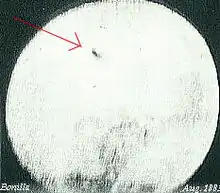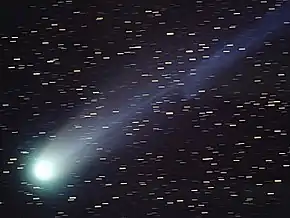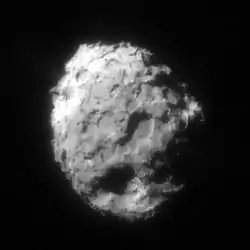Bonilla observation
On August 12, 1883, the astronomer José Bonilla reported that he saw more than 300 dark, unidentified objects crossing before the Sun while observing sunspot activity at Zacatecas Observatory in Mexico.[1] He was able to take several photographs, exposing wet plates at 1/100 second. These represent the earliest photos of an unidentified flying object.[2] It was later suggested that the objects were high-flying geese, while some ufological literature interpreted the objects as either alien spacecraft or an unsolved mystery.

In 2011, researchers from the National Autonomous University of Mexico suggested that the unidentified objects may have been fragments of an estimated billion-ton comet passing within a few hundred kilometers of Earth.[3][4]
References
- Bonilla, José (1 January 1886). Flammarion, Camille (ed.). "Passage Sur Le Disque Solaire". L'Astronomie (in French). Paris. IV: 347–350.
- Nickell, Joe (2005). Camera Clues: A Handbook for Photographic Investigation. University Press of Kentucky. ISBN 9780813191249. Retrieved April 8, 2005.
- "Billion-Ton Comet May Have Missed Earth by a Few Hundred Kilometers in 1883". MIT Technology Review. 17 October 2011. Retrieved 19 October 2011.
- The Week's Editorial Staff (18 October 2011). "Did a massive comet almost wipe out humans in 1883?". The Week via Yahoo! News. Archived from the original on 2011-10-22. Retrieved 22 October 2011.
| |||||||||||||||||||||||||||||||
| |||||||||||||||||||||||||||||||

